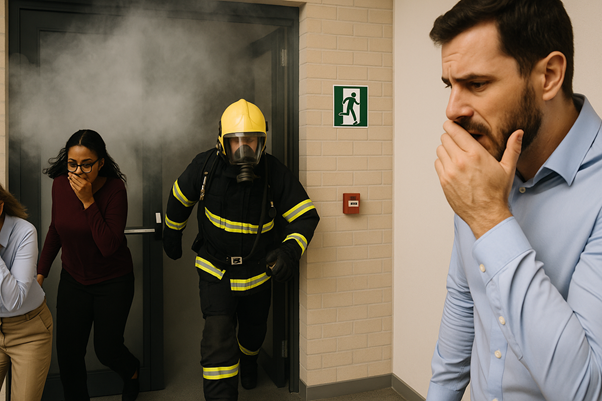
Workplace safety is a cornerstone of effective business operations. Among the most critical components of any safety strategy is a well-thought-out fire evacuation plan. Fires are unpredictable and can cause irreparable harm to both people and property. Yet, many organizations underestimate the need for structured, tested fire evacuation protocols—until it’s too late.
This article explores why every workplace, regardless of size, location, or industry, needs a fire evacuation plan, what it should include, and how it benefits employees, employers, and the business as a whole.
The Importance of Fire Evacuation Plans
A fire evacuation plan is a formalized, written strategy that outlines what employees should do in the event of a fire. It includes evacuation routes, assembly points, roles of emergency personnel, and communication procedures.
Here’s why having such a plan is non-negotiable:
- Protects Lives
The most important reason to have a fire evacuation plan is to protect human life. Fires can spread within minutes, leaving little time for people to react. Without a clear plan, panic and confusion can escalate, increasing the risk of injury or fatality. An evacuation plan ensures that everyone knows exactly what to do and where to go, significantly improving survival rates. - Reduces Property Damage
Fires don’t just endanger lives—they also cause extensive damage to infrastructure, equipment, and inventory. A good evacuation plan, when combined with fire detection systems and early warnings, can speed up evacuation and reduce the time people spend inside a burning building, enabling faster emergency response and potentially limiting damage. - Ensures Compliance with Regulations
Many regions legally require workplaces to have fire evacuation plans. Regulatory bodies such as OSHA (Occupational Safety and Health Administration) in the U.S. or local fire departments often mandate that businesses prepare, implement, and regularly update fire safety plans. Non-compliance can lead to fines, shutdowns, and legal consequences. - Prepares for Emergencies Beyond Fires
While the plan is primarily for fires, evacuation procedures can also apply to other emergencies like gas leaks, earthquakes, or chemical spills. Having a comprehensive evacuation strategy means the business is ready for a broader range of scenarios, not just fires. - Promotes a Culture of Safety
Workplaces that actively prepare for emergencies create a culture of safety. When employees see that their safety is taken seriously, it builds trust and morale. This also encourages workers to be more alert and responsive to hazards, fostering a proactive safety environment.
What Should a Fire Evacuation Plan Include?
To be effective, a fire evacuation plan must be thorough and tailored to the specific layout and function of the workplace. Here are the core components it should cover:
- Evacuation Routes and Exits
Clearly marked and unobstructed exits are essential. The plan should identify primary and secondary escape routes for each area of the building and display them prominently throughout the premises. - Assembly Points
Designate a safe outdoor meeting area where employees can gather after evacuating. This allows for headcounts and ensures no one is left behind or missing. - Roles and Responsibilities
Assign specific roles to staff members, such as:- Fire wardens or marshals to guide people and ensure no one is left inside.
- First-aid officers to assist with minor injuries.
- Communication coordinators to contact emergency services and inform stakeholders.
- Alarm and Communication Systems
Describe how the alarm will be triggered and how information will be communicated during the evacuation (e.g., PA system, hand signals, or mobile alerts). This section should also include emergency contact numbers. - Special Provisions for Vulnerable Individuals
Include specific procedures for people with disabilities, injuries, or other conditions that may hinder quick evacuation. Assign helpers and install evacuation aids where necessary. - Fire Suppression Equipment
List the locations of fire extinguishers, sprinkler systems, and fire blankets. While employees are generally instructed to evacuate, trained personnel may attempt to control minor fires if safe to do so. - Evacuation Drill Schedule
Set a timetable for regular fire drills, typically once or twice a year, to ensure that everyone is familiar with the procedures and that any weaknesses in the plan are identified and corrected.
How to Implement a Fire Evacuation Plan
Having a plan is one thing; executing it effectively is another. Here’s how to successfully implement your workplace fire evacuation plan:
- Involve All Departments
Collaborate with HR, security, maintenance, and department heads when developing the plan. Each department has unique layouts and challenges that must be considered. - Train Employees
Host mandatory training sessions to walk staff through the evacuation plan. Include fire prevention tips, the proper use of extinguishers, and what to do during a fire emergency. - Practice Through Drills
Conduct fire drills regularly to test the plan under realistic conditions. After each drill, gather feedback and analyze the response time, communication efficiency, and behavioral observations to improve the process. - Post Visual Aids
Display evacuation maps, emergency exits, and fire safety instructions throughout the workplace. Visual aids help reinforce training and assist new employees or visitors in an emergency. - Review and Revise
Fire risks change as businesses evolve. When you renovate, expand, or rearrange your office, update the fire evacuation plan accordingly. Also, revisit the plan annually to reflect lessons learned from drills or changes in personnel.
Case Studies and Real-World Lessons
Several high-profile fire incidents have illustrated the importance of having an effective evacuation plan. In workplaces where plans were well-communicated and regularly practiced, casualties were significantly lower, and evacuation was orderly.
On the other hand, workplaces without proper procedures experienced chaotic evacuations, increased injuries, and legal fallout. The difference is often the result of preparation—or the lack of it.
Conclusion
Fires in the workplace are sudden and dangerous, but their impact can be minimized or even prevented with the right plan in place. A fire evacuation plan is not just a regulatory checkbox—it’s a life-saving document that ensures everyone knows what to do in an emergency.
Every employer has a responsibility to protect their staff, customers, and assets. By investing time in developing, communicating, and practicing a fire evacuation plan, you build a safer, more resilient workplace that’s prepared to face any emergency with confidence and clarity.
Now is the time to act. Don’t wait for a fire to reveal what your workplace was missing—prepare today, and protect what matters most.
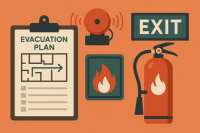
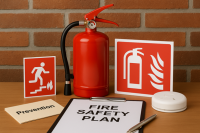
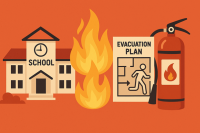
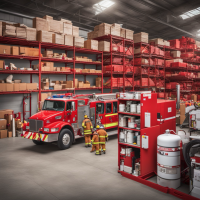

Leave A Comment